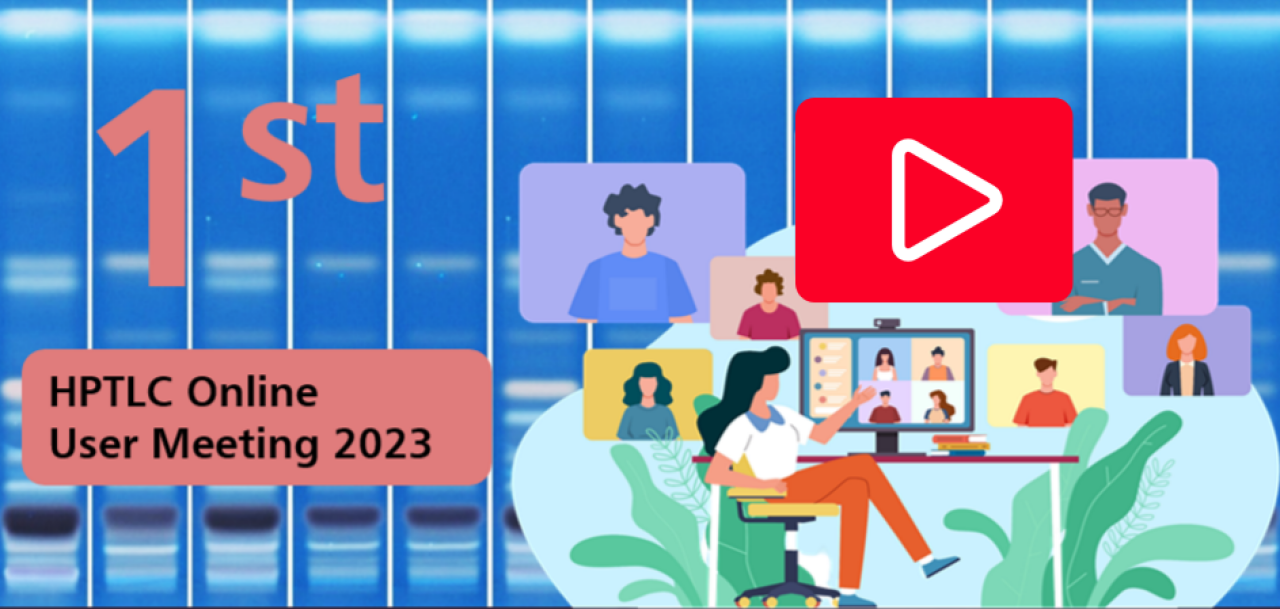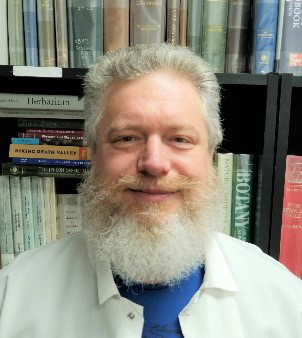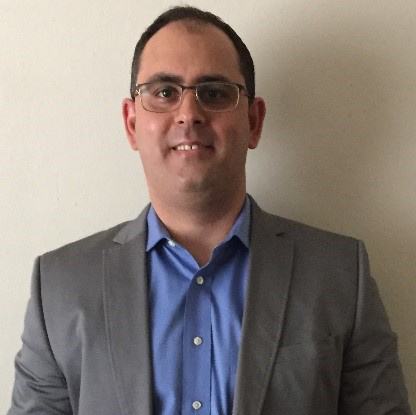
1st HPTLC Online User Meeting 2023: "HPTLC in compliance with USP <203> and beyond"
Dear participants,
Thank you for joining us in the 1st HPTLC Online User Meeting 2023!
The HPTLC Association North America Chapter was pleased to welcome you all. We are aware that some of the registered for the meeting were not able to connect with us today since the Zoom participant limit was reached. We apologize for any inconvenience this may have caused.
You can stream the presentations here on Youtube:
>>> Stream Recording of Presentation #1 on Youtube
>>> Stream Recording of Presentation #2 on Youtube
1st HPTLC Online User Meeting 2023
hosted by the HPTLC Association North America Chapter
Topic:
HPTLC in compliance with USP <203> and beyond
Invitation of James KABABICK, Interim President, HPTLC Association North America Chapter
Wednesday, April 5th, 2023
08:00 Pacific Daylight Time / 11:00 EDT / 16:00 BST / 17:00 CEST / 20:30 IST
Presentation #1.
Scanning Densitometry, Additional Visualization, and HPTLC-Mass Spectrometry in the Quality Control of Botanical and Non-Botanical Dietary Supplements
James P. Kababick, Founder and Director of Flora Research Laboratories, LCC (FRL)
Abstract:
In the United States, botanical and non-botanical dietary supplements are regulated under 21 CFR part 111. These regulations require 100% identity testing on all incoming lots of dietary ingredients. Additionally, manufacturers must ensure that ingredients are free from reasonably anticipated contaminants (RACs). Among chromatographic methods, High-Performance Thin-Layer Chromatography (HPTLC) is considered the gold standard for botanical identity. It offers a visually rich and multi-dimensional visualization of the phytochemicals present allowing for reliable identification. However, many stakeholders are missing out on additional data layers freely available from the same plate. The utilization of scanning densitometry, HPTLC-MS, and additional visualization provide answers that are not always immediately available in the fundamental visualization methods outlined in monographs. We will examine case studies where these extra data layers make the difference and how they can be implemented in your laboratory.
Biography, James Kababick:
James P. Kababick is the founder and Director of Flora Research Laboratories, LLC (FRL), which specializes in the research and analysis of botanicals, dietary supplements, and related compounds. He is also the interim President of the North American Chapter of the HPTLC Association. Following his botanical microscopy training at FDA, he spent many years as an adjunct faculty at Bastyr University where he taught botanical drug identification by microscopy and thin layer chromatography. In addition to his work at the private research & testing lab, he serves on multiple expert committees for AOAC, USP, NIH, AHPA, and others. Currently, his work is focused on the utilization of modern analytical technologies in the investigation of dietary supplements and other agricultural products. He is the pioneer of the field called “Phytoforensic Science.” Phytoforensic Science involves utilizing numerous technologies from microscopy to mass spectrometry to detect adulteration and contamination in the global food supply chain with a special focus on dietary supplements.
Presentation #2.
High-Performance Thin-Layer Chromatography <203> looking behind the standardized parameters.
Wilmer Perera, Ph.D., Laboratory Manager at CAMAG Scientific, Inc., Wilmington, NC
Abstract:
High-Performance Thin-Layer Chromatography (HPTLC) is a standardized technique widely used in the quality control of herbal drugs in the United States of America. The United States Pharmacopeia is the entity that helps ensure the quality and safety of medicines, dietary supplements and foods. In that regard, the USP Chapter <203> High-Performance Thin-Layer Chromatography Procedure for Identification of Articles of Botanical Origin and the USP Chapter <1064> Identification of Articles of Botanical Origin by High-Performance Thin-Layer Chromatography Procedure have been published to describe a procedure for use in USP identification test that relies on HPTLC. The HPTLC variables for the different chromatographic steps: sample application, chromatogram development, visualization, detection, documentation and evaluation have been carefully optimized and described in the chapters. This presentation will illustrate with practical examples the importance of controlling all HPTLC parameters to achieve reproducibility in the identification of articles of botanical origin and successfully transfer USP methods into daily quality control.
Biography, Wilmer Perera, Ph.D.:
Wilmer is currently the laboratory manager at CAMAG Scientific, Inc., CAMAG’s sister company, and the world leader in planar chromatography. Wilmer oversees HPTLC analyses and projects in Wilmington, NC and provides advanced HPTLC trainings and short courses to customers in the United States of America and Canada. Dr. Perera is also the secretary general of the North America Chapter of the International Association for the Advancement of High-Performance Thin-Layer Chromatography (NA Chapter-HPTLC Association) and collaborates in the HPTLC Atlas for the identification of herbal drugs and in the scientific HPTLC PRO network. He is also a USP expert advisor and participates actively in USP meetings.


Comments
Leave a comment